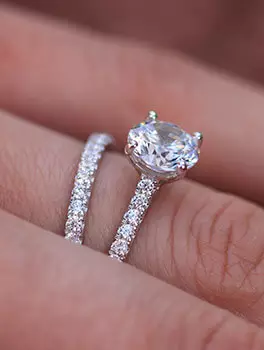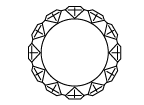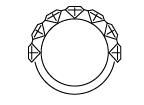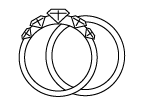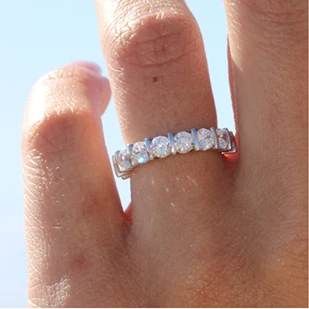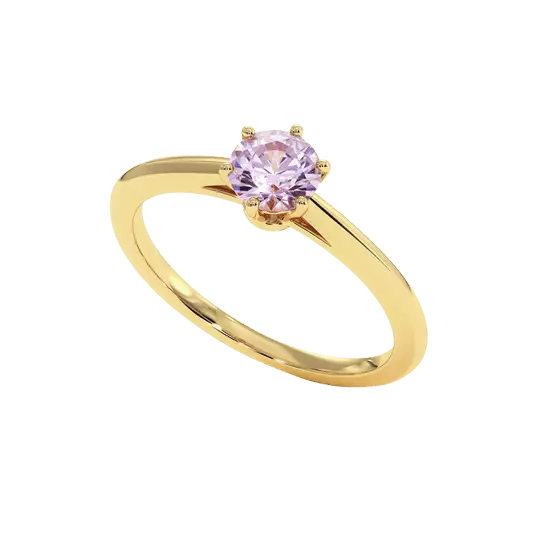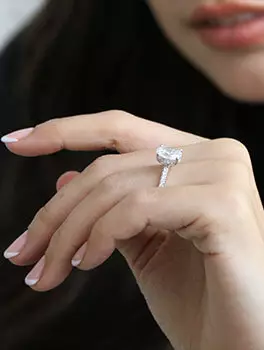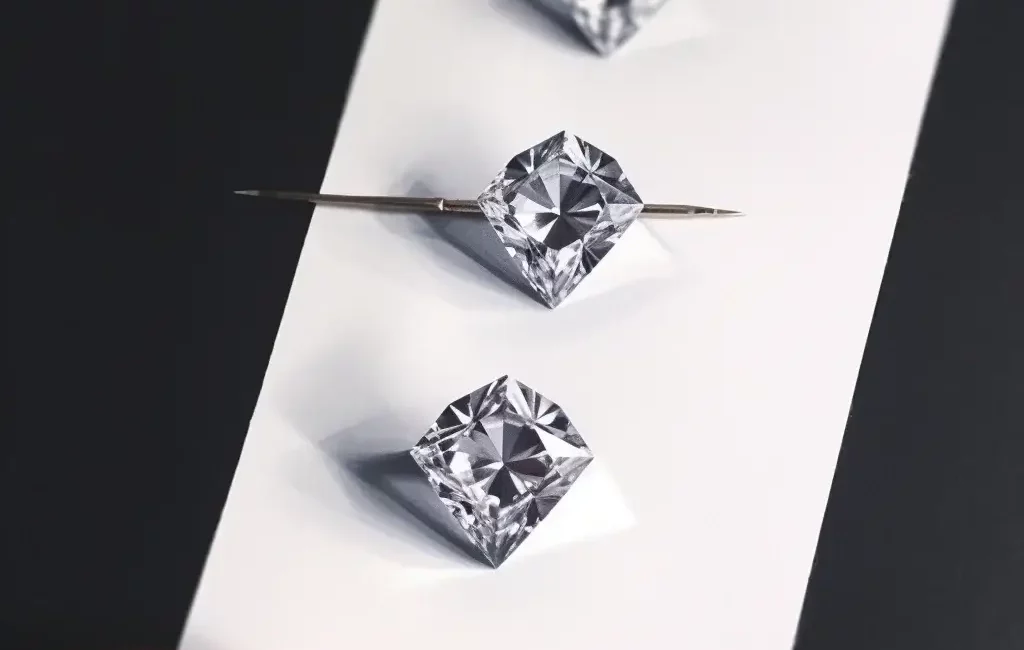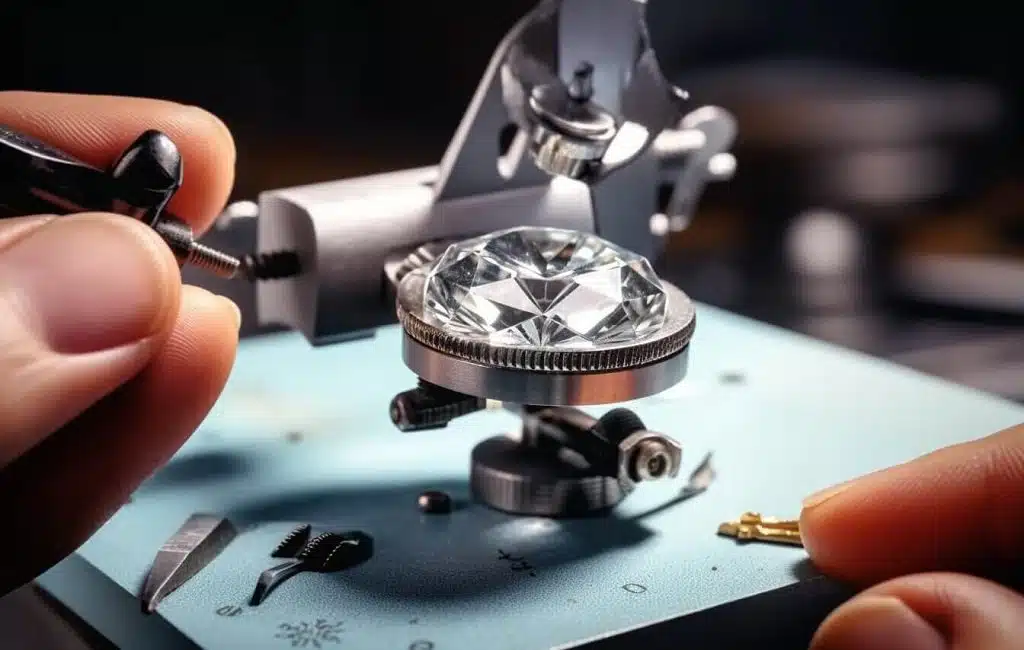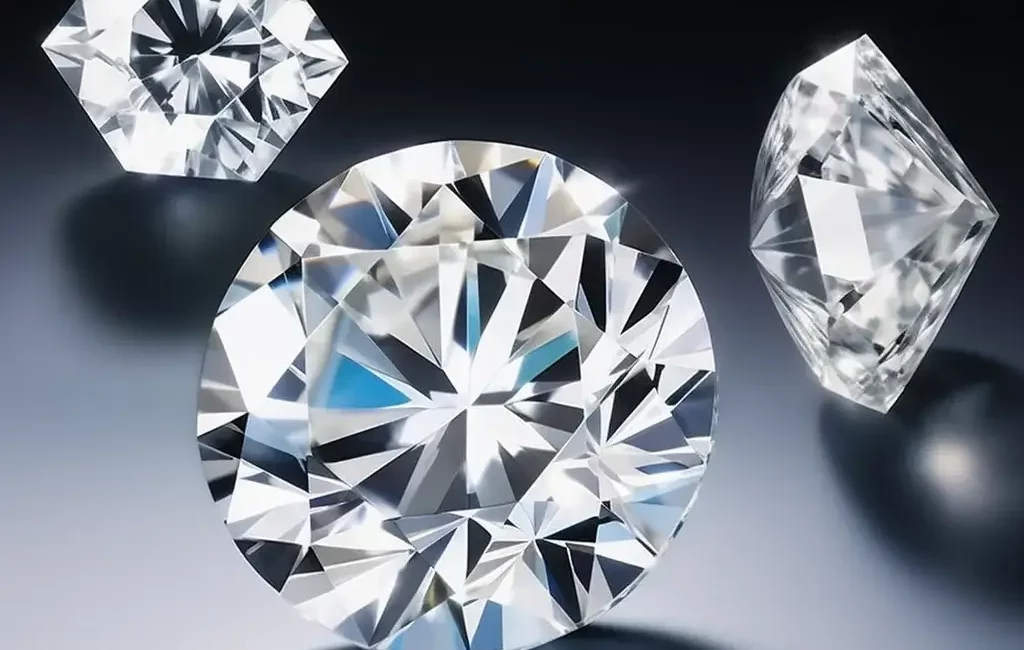The Purity of the Diamond
The Purity or Clarity of the diamond is a very important characteristic of the 4C. Here, you will read terms that you may qualify as barbaric like VS1, SI2, Very Very Slight, difficult to understand when our goal is to acquire the most beautiful jewel in the world: the diamond. Don't worry, everything is explained here.
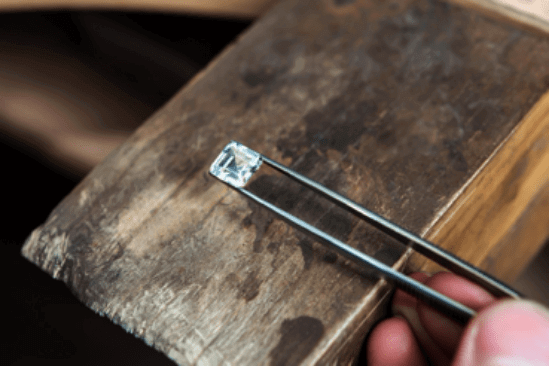
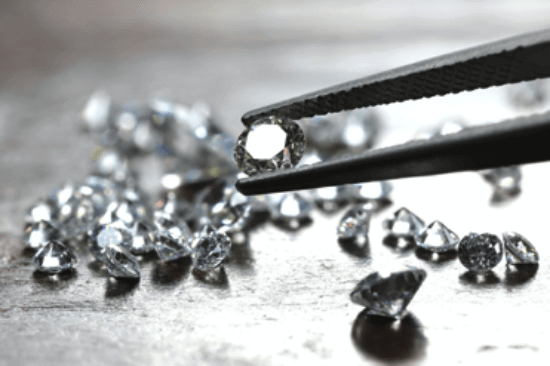
The purity of a diamond is measured based on the stone's inclusions. Inclusions are internal features of the gem resulting from their crystallization. The diamond can also have external features that are related to the Cut of the stone, these are called imperfections. This is the only inclusion that can be caused by man. Internal inclusions are characterized by traces of graphite, clouds of points, small crystals trapped in the diamond...
Diamonds are classified in a precise nomenclature ranging from very included to no visible inclusion. The reference classification is that of the GIA, it is composed of 11 levels: flawless (FL), internally flawless (IF), two categories of very very slightly included (VVS), two categories of very slightly included (VS) and three categories of included (I).
Carob seeds were used by the first gemstone merchants as counterweights in their scales. First adopted by the United States in 1913, this unit is now widespread worldwide. No matter where you are on earth, a carat will always weigh the same. To weigh a diamond you need a scale that must be installed away from drafts, vibrations and heat sources. These conditions are necessary in order not to distort the result. The stone must be clean. You also need to check the accuracy of the scale: zero it, weigh it empty then weigh it with the stone. For the result, you should always put 2 digits after the decimal point. Even if your diamond weighs 3 carats, you should put 3.00 carats. (Fun fact: it is not uncommon to see "ct" written instead of "carat").
Abréviations | Définitions |
FL ou Flawless | C’est le top du diamant, aucune inclusion visible. (Fun fact : certains gemmologues et joailliers peuvent ne pas voir de diamant de ce degré durant toutes leurs carrières) |
IF ou Internally flawless | Aucune inclusion, des imperfections à la surface sont parfois présentes. |
VVS1 | Minuscules inclusions difficilement visibles sur le côté du diamant, elles sont très difficiles à localiser à la loupe. |
VVS2 | Minuscules inclusions difficilement visibles au milieu du diamant, elles sont difficiles à localiser à la loupe. |
VS1 | Très petites inclusions difficilement visibles sur le côté, peu difficiles à localiser à la loupe. |
VS2 | Très petites inclusions difficilement visibles au milieu, elles sont facilement visibles à la loupe. |
SI1 | Petites inclusions qui sont évidentes à la loupe. |
SI2 | Petites inclusions facilement visibles à la loupe, difficiles à voir à l’œil nu. |
I1 | Inclusions très facilement visibles à la loupe et à l’œil nu. |
I2 | Grosses inclusions visibles à l’œil nu perturbent la brillance et aisées à voir à l’œil nu. |
I3 | Très inclus. |
You will have understood, the degrees of clarity FL, IF, VVS1, VVS2 and VS1 will always be clear. It is almost impossible to detect an inclusion with the naked eye at these degrees.
Here are some comparisons between different clarity grades of diamonds with each other:
IF and I1
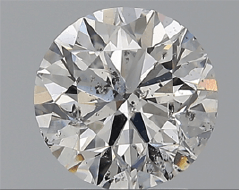
The text you provided is not in French. Could you please provide a French text to translate?
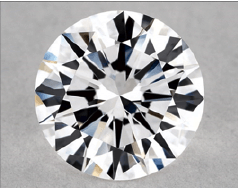
IF
Here, we compare an almost perfect diamond to a very included diamond. IF quality diamonds represent less than 1% of the world's diamonds, so they are rare. As we have seen, an IF diamond has no inclusions and may sometimes have surface imperfections. However, I1 diamonds have obvious inclusions under 10x magnification and are also visible to the naked eye. An I1 quality diamond will affect its brilliance and transparency.
VVS1 and VVS2
Two diamonds of VVS1 and VVS2 quality are hard to distinguish. Only a qualified gemologist can detect the inclusions with a 10x magnifying glass. The only difference between these two clarity grades is the location of the inclusions. If the inclusions are placed on the side of the diamond pavilion, it is a VVS1 diamond, if the inclusions are in the upper half of the diamond then it is a VVS2. Why is it a VVS1 when the inclusion is in this location and a VVS2 when the inclusion is in another location ?
Purity depends on various criteria including the location of inclusions. Their location is important, because you can have two diamonds with the same inclusion but in different places. This inclusion will not be seen in the same way. For example, an inclusion next to the pavilion (base) will be less visible, so we will have a VVS1 quality diamond. And if there is an inclusion on the upper half of the diamond, elle will be much more visible, we have a VVS2 quality diamond.
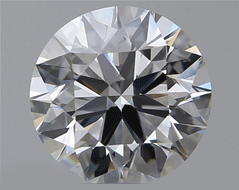
VVS1
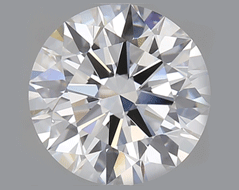
VVS2
VS1 and VS2
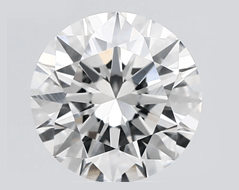
VS1
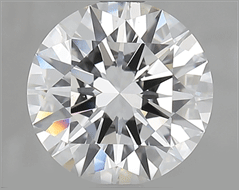
VS2
These degrees of clarity have "microscopic advantages". The difference between these two degrees can only be seen under a magnifying glass. For a VS1 quality diamond, only white inclusions will be visible at 10x magnification. VS1 diamonds are always clean diamonds, often they are the preferred diamonds of investors. To the naked eye, the diamonds are clean and they are priced lower than VVS or F diamonds. A VS2 diamond also has inclusions visible under a magnifying glass, but there will still be no visible flaws to the naked eye.
SI1 and SI2
The inclusions of an SI1 diamond will be visible under a magnifying glass and sometimes to the naked eye. It is easier to see the inclusions at 20x magnification for the SI1 grade. However, for the SI2 grade, diamonds have inclusions easily visible under a 10x magnifying glass. These SI2 diamonds have more significant flaws than an SI1 diamond.
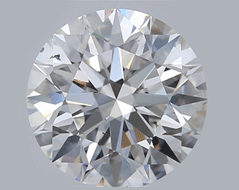
IF1
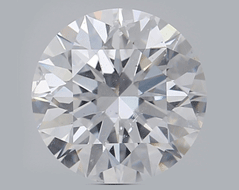
SI2
The purity of the diamond is a key element, the clarity depends on the 3 other Cs: its cut, its color, and its carat. That's why we are now going to discuss the impact of these 3 characteristics on clarity.
The clarity and the carat:
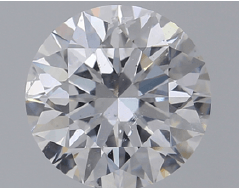
SI2 0.50 carat
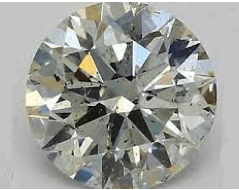
SI2 1.27 carat
It's obvious, not all diamonds have the same carat. Therefore, there are differences in clarity in a diamond of the same grade but with a different carat. As it grows, the clarity characteristics of a diamond intensify. Let's take for example two diamonds: one of 0.90 carat and one of 3 carats. The 3 carat diamond shows more flaws. Thus, for a diamond greater than 1 carat, it is preferable to opt for a higher quality diamond (VS2).
The clarity and size:
There are many different sizes for diamonds: emerald, pear, marquise, princess... Apart from the round cut, the other so-called fancy sizes highlight the inclusions. If we take a diamond of the same clarity grade but of a different shape (an emerald cut and a round cut), we will see more inclusions in the emerald cut.
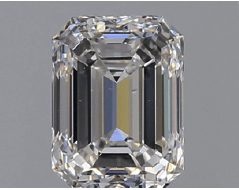
SI1 Emerald Size
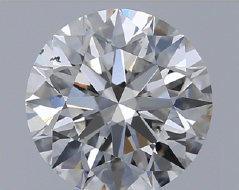
SI1 Round Size
The clarity and the color:
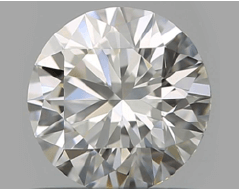
Diamond D
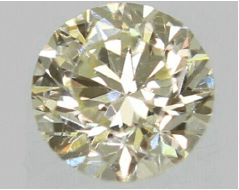
Diamond E
These two characteristics of a diamond contribute to the visual appearance of the diamond. The yellower a diamond is, the more it will highlight the inclusions. The more icy white a diamond is, the less visible the inclusions will be. The same applies to two diamonds of different shades with the same degree of clarity.
Certain inclusions can be seen with a 10x magnifying glass. The purity is graded based on the following criteria:
- The size of inclusions
It's the first thing we look at. The larger and more visible the inclusion is to the naked eye, the lower the degree of purity. (Fun fact: a necklace sold very quickly even though it had a huge red inclusion in the center of its diamond. The reason: a saleswoman changed its description to "the diamond with the red heart". Sometimes, one person's flaws make another's beauty).
- Their number
If there are inclusions present, they must be counted. Again, the fewer there are, the purer the diamond is.
- Their location
For this criterion, it varies depending on the grading of the stone. To put it simply, if you have an IF, VVS or VS stone, the location is not important, as the inclusion is not visible to the naked eye. Thus, the inclusion does not impact the brilliance of the diamond. However, if you have an SI1 diamond or less, this criterion should be taken into account. Indeed, depending on its location, an inclusion will be more or less visible. So if you are buying an SI2 diamond for example, it is preferable that the inclusion is located under the crown rather than in the middle of the table, where elle will be very visible.
- Their nature
This is about determining whether the inclusion is internal or external, the nature of the inclusion will be noted on the certificates. In most cases, the inclusion is internal. Be careful, no diamond with an inclusion will be called FL or IF.
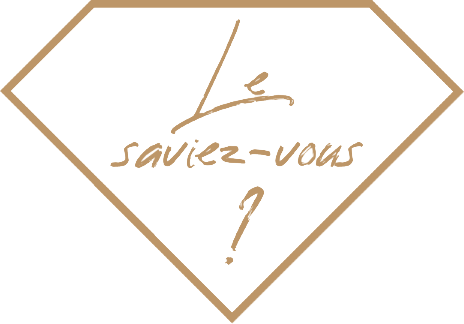
1. Our grandmothers used to call the inclusion traces of graphite: "toads" because they are black spots on the diamond.
2. When observing a diamond's inclusion under a magnifying glass, one can witness an optical effect. Indeed, a single inclusion can be reflected due to the diamond's mirror effect. It then gives the impression of seeing several inclusions when there is only one.
3. The diamonds of clarity VS2, SI1 and SI2 are called the magic zone. This is indeed the ideal point where one can find perfectly clear diamonds while making considerable savings.
Depending on the cut of your diamond, it will have a more or less significant depth.
- If the depth is significant, the diameter of the diamond will be reduced: consequently, less light is reflected to the eye. Therefore, the brilliance and sparkle of the diamond will be of lesser quality.
- Conversely, a diamond with less depth will have a larger diameter, consequently, more light is reflected to the eye. Therefore, the brilliance and sparkle of the diamond will be of higher quality.
With this explanation, you can easily understand that it is not the carat that gives the diamond its brilliance but its cut. By choosing a perfect cut, the gem will appear larger and you can even fool your friends about its weight! It is therefore preferable to prioritize a good cut to the diamond than its carat.
Advice from the diamond dealer:
As you will have understood, it is important to carefully examine the diamond before buying it. What you need to do is find diamonds in the magic zone (VS2, SI1 and SI2) there you will be sure not to make a mistake. Indeed, your eyes will find these diamonds pure. It's the right compromise between quality and price.
When buying the diamond, you must rely on the certificate. The certificate is a bit like the diamond's identity card, a lot of information is present such as its size, its inclusions...
Large laboratories like GIA, HRD, EGL or IGI are the most reliable. What is important:
- For the purchase of a diamond of more than 0.30 carat it is preferable that it is certified by one of the laboratories mentioned above.
- A certified diamond has an engraving on the girdle (its circumference) that ensures its identity. It's proof that you're buying a real diamond. On the certificate will be marked "laserscribed"
- Be careful: the larger the diamond, the more visible the inclusions will be. Prefer a higher quality when you want a larger diamond.
Learn more about inclusions:
Each diamond is unique, two diamonds will not have the same inclusions. To identify the inclusions of the diamond, each certificate has what is called a plotting diagram. It is a representation of the gem, the arrangement of its facets so we can know where each element of the diamond is. On the diagram, there are two views of the diamond: the top (the crown) and the bottom (the pavilion).
What are the plotted characteristics?
Each characteristic will be assigned a specific color and symbol:
- The color red indicates the vast majority of inclusions
- Red and green: are used together and indicate cavities, knots, engraving channels...
- Green shows natural characteristics
- Extra facets will be indicated with black
Example of the list of characteristics that can be on a plotting diagram with their symbols:
Of course, some characteristics do not need to be reported because they are weak and do not alter the purity of the gem. In these cases their presence will be marked in the comments. Diamonds are scrutinized by experts so that all characteristics are identified and marked on the plotting diagram.
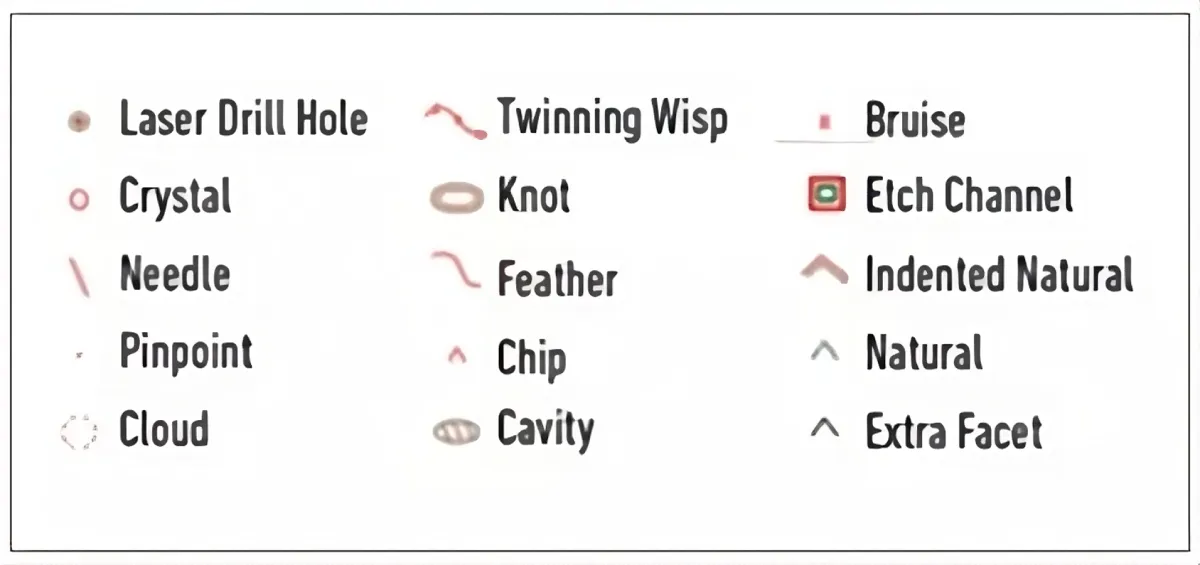
What are the most common inclusions in diamond?
- Crystal inclusions: reddish crystals (garnets), black crystals (carbon or graphite), greenish crystals (peridot): minerals trapped inside a diamond.
- Feathers: this inclusion subtly resembles a bird's feather, it's a small crack inside the stone.
- Pinpoint: this is the most common type of inclusion, it is rather difficult to locate white points. This inclusion will be marked in the comments.
- Graining: these are lines, angles or curves that can appear whitish, colored or reflective that affect the transparency of the gem.
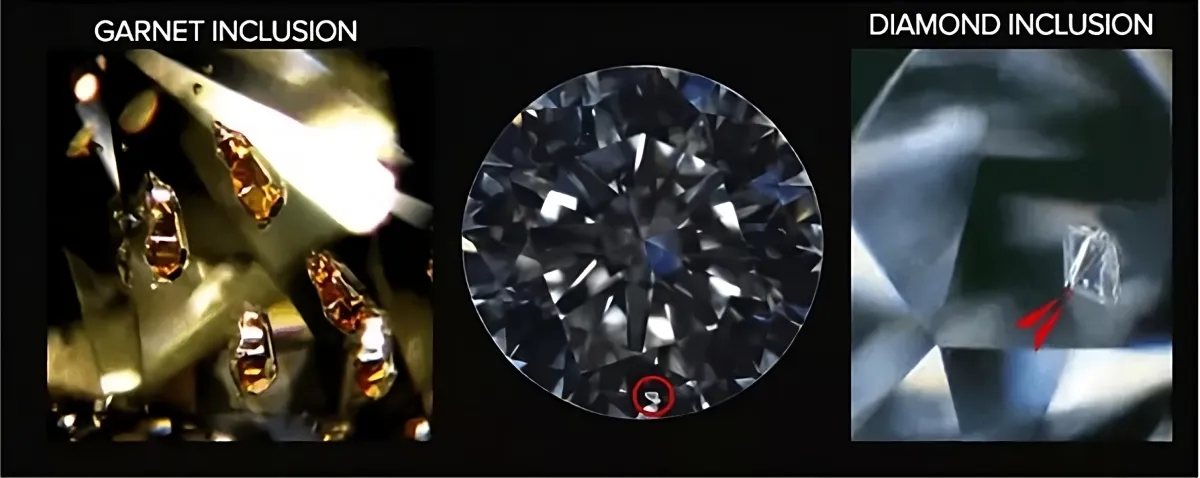
Congratulations! You are now an expert in understanding diamond purity. Don't forget to demand your diamond's certificate when the chosen diamond is certified..
Discover the other criteria of the 4Cs of diamond:








NEWSLETTER
Sign up to receive the latest news regarding
the products and services CELINNI, and much more.
This website uses its own and third-party cookies to improve our services and show you advertising related to your preferences by analyzing your browsing habits. To give your consent to its use, press the Accept button.
Cookie preferences
| Cookie | Provider | Purpose | Expiry |
|---|---|---|---|
| PHP_SESSID | www.celinni.com | The PHPSESSID cookie is native to PHP and allows websites to store serialised status data. On the website it is used to establish a user session and to pass state data through a temporary cookie, which is commonly known as a session cookie. These Cookies will only remain on your computer until you close your browser. | Session |
| PrestaShop-# | www.celinni.com | This is a cookie used by Prestashop to store information and keep the user's session open. It stores information such as currency, language, customer ID, among other data necessary for the proper functioning of the shop. | 480 hours |






















